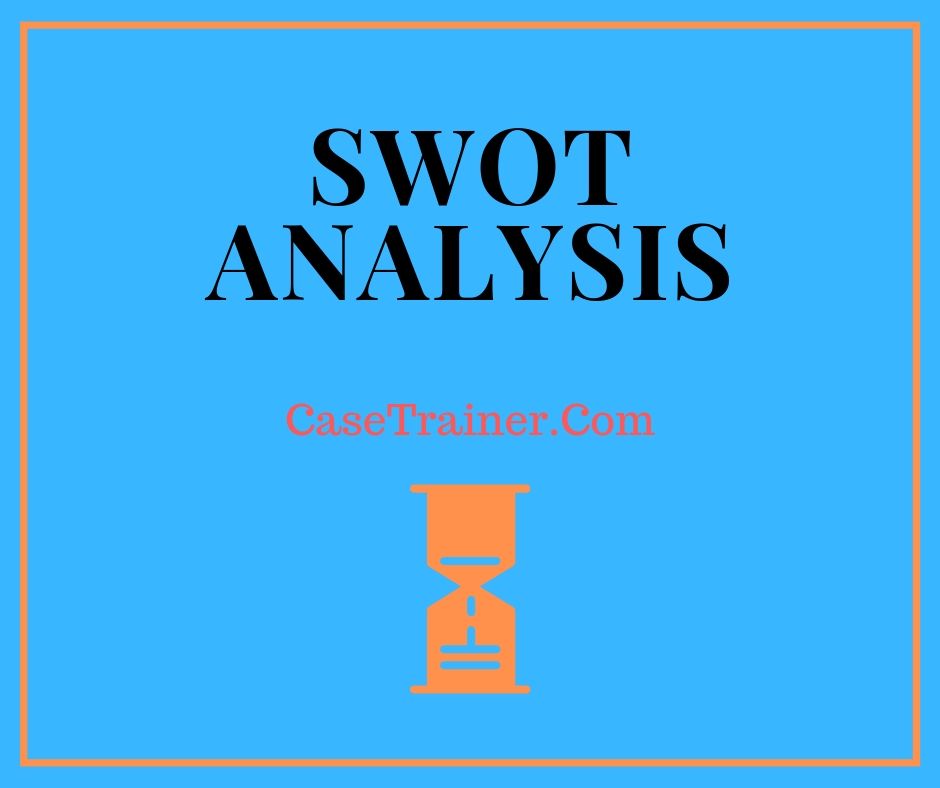Final Exam Part B Case Study Solution and Analysis
Introduction
Final Exam Part B Case Study Analysis is the largest publishing company with a highest market share in the China's book retail market. CMP has become a specialized info provider and a large thorough Science and Innovation publishing business through the combination of print media, audio-visual media and the network media.
Vital Issues
Although, Final Exam Part B Case Study Analysis has invested its 60 years journey efficiently, being an effective publishing house, nevertheless, the altering macro market trends and forces bring specific challenges to the publishing market in basic and CMP in particular. These aspects consist of;
• Entryway of the new publishing companies in the market.
• Decreasing growth of the publishing market.
• Market saturation.
• Intro of digital publishing methods
• Enhancement of science and innovation.

The transformation of the macro markets have raised a number of questions to the management at CPM that what could be the future of CMP in this circumstance? Do the long valuable experience, technical resources and the capabilities of the company could be utilized to strive for the future advancement unceasingly? How could the business sustain its long term competitive position in future?
Situational Analysis
Internal Analysis
SWOT Analysis
Strengths
Final Exam Part B Case Study Help has particular strengths that can be utilized to lower the risks, overcome the weak point and avail the opportunities. Strengths of CMP are offered as follows;
• The long term experience of Final Exam Part B Case Study Solution in the publishing market i.e. 60 years permits the business to provide high quality items at a lower cost using its prior experiences.
• The technical resources and abilities generated by its effective journey provide a competitive benefit to CMP.
• Large item portfolioof CMP assists it to diversify its danger and offer high value to its consumers.
• Strong monetary position enables the business to consider numerous development opportunities with no fear of raising fund externally.
Weaknesses
In addition to the strengths, the company has particular weaknesses which could increase restraints for the business in implementing its development program. The weaknesses of Final Exam Part B Case Study Help are provided as follows;
• Despite of being a science and innovation publishing firm, the company still has traditional methods ofpublishing which are not compatible with the growing technological shift.
• CMP highly relies over the Chinese markets for its growth. It must propose certain growth strategies to prevent its dependence over the Chinese markets to achieve long term development.

Opportunities
The development of the publishing market is declining considering that 2008, affecting Final Exam Part B Case Study Analysis as well, however the growth might be revived by availing particular opportunities presented in the market. The market opportunities for CMP consist of;
• The company might likewise present Digital Publishing by using its long term technical experience and a strong customer recognition in the market.
• CMP could consider an advancement program through the growth towards foreign markets in order to reduce its dependence over Chinese markets by using its vast financial resources.
Threats
The altering macro patterns in the market and increasing competition in the publishing industry has actually postured certain risks to Final Exam Part B Case Study Analysis consisting of;( Gurel, 2017).
• Introduction of digital publishing i.e. digital libraries might result in declining market share of Final Exam Part B Case Study Help due to the customer shift towards virtual libraries.
• The presence of a great deal of competitors in the publishing industry increase the threat for CMP to lose its competitive position in the market, as rivals can gain a strong consumer base by utilizing specific strategies like aggressive promo, quality items, etc.
• Entryway of new publishing firms in the industry along with presence of high competitors increases the hazard of losing the consumer base.
Monetary Analysis.

The business has a rather competitive financial efficiency. Due to lack of data, the financial ratios of CMP could not be determined. Nevertheless, the total monetary efficiency of the business might be examined by using the charts given in the case Appendices. It could be evaluated from the Appendix III that the annual total revenues of CMP during the period 2000-2012 are growing at a high growth rate, showing that the annual demand of the products of Final Exam Part B Case Study Help is growing and the company is quite efficient in drawing in a large number of consumers at a potential cost.
Together with it, the 2nd graph which reveals the annual development in the Final Exam Part B Case Study Analysis overall assets, shows that the company is rather effective in including worth to its properties through its profits. The development in possessions shows that the total value of the firm is likewise increasing with increasing the overall profits. (Unidentified, 2013).
Another financial analysis of the business using the given data might be the analysis concerning the distribution of overall earnings of the business. Major part of the earnings of CMP originates from the sales of its released books i.e. 64% as displayed in the Case Appendix V. The company could move towards other organisation sectors with a potential growth to accomplish its future development objective.
PESTEL Analysis
PESTEL analysis could be conducted to discover the numerous external forces affecting the performance of the business and the current patterns in the external environment of the company. A brief PESTEL analysis of the company is given as follows; (Alanzi, 2018).
Political.
As the publishing sector might have a significant effect on the mindset of individuals about the communist ideology of the government, therefore, the publishing sector is extremely supervised and guided by the Publicity Department of the Communist Party of China. For that reason, it could be stated that the general political forces impacting Final Exam Part B Case Study Analysis company are high. The federal government policies relating to the publishing sector are likewise increasing with the passage of time.
Economical.
Financial forces affecting the publishing sector in basic and the Final Exam Part B Case Study Solution in particular includesthe costs of paper, the income level of customers, the inflation rate, and the general GDP development of the country. All these forces combine impact the need for the publishing market. Along with it, the financial policies associated with the import of books affect the overall business at CPM. Nevertheless, China's financial conditions are quite favorable for CMP with high GDP growth and consumer income level.
Social and Demographical.
The consumer choices are moving towards digital publishing rather than the standard was of publishing. In this regard, CMP should focus on digital publishing to meet the altering customer preferences.
Technological.
Technological forces affecting the CMP include the technological development in the reading methods and so on. Improvement of science and technology in addition to the increase of digital publishing could minimize the need for the CMP products, if certain actions would not be taken soon.
Environmental.

Ecological forces affecting Final Exam Part B Case Study Solution includes the issues of environmental communities over the use of paper in publishing books. The paper used in the books while publishing is required to be disposable and the ink utilized while publishing needs to not be damaging for the environment.
Legal.
Legal guidelines for the publishing sector at whole are high. The legal regulations regarding the publishing sector is managed by the General Administration of Press and Publication. Publishing Ordinance 1997 requires the publishers to be authorized initially by the Government to be entered in the publishing market. The ordinance forbids direct involvement of foreign entities and individuals in the publishing sector.
Industry Analysis (Porter's Five Forces Design).
Porter's Five Forces Model might be used to examine the attractiveness of the publishing market China. A quick analysis of the Porter's Five Forces is offered as follows;.
Threat of New Entrants.
Hazards of new entrants in the Chinese Publishing Market is moderate. The potential development in the market tends to attract new entrants to the publishing industry. The existence of extreme competition and the requirement of huge capital tends to demotivate new entrants to go into in the market.
Danger of Replacement.
Threat of Replacement is high for the Chinese Publishing Market. The alternative items for the published files is the files provided in the virtual libraries on specific sites. The changing customer choices towards digital learning increase the hazard of substitution for the market.
Competitive Competition.
Competitive rivalry in the publishing industry is high. The existence of a great deal of customers in the Chinese Publishing Industry like CIP, PTP and so on tends to produce high competitive competition for CMP. Together with it, brand-new entrants are also participating in the marketplace increasing the competition for CMP.
Bargaining Power of Provider.
The significant providers of the Final Exam Part B Case Study Analysis include the suppliers of the paper for publishing files. As CMP is the biggest publisher in the Chinese Publishing Market, for that reason the overall bargaining power of supplier for CMP is low.
Bargaining Power of Buyer.
Haggling power of buyer in the publishing market is high. Due to the existence of a a great deal of publishers in the Chinese market and the market saturation, the buyers requires high quality files at competitive prices.
Rivals Analysis.
CMP runs in a highly competitive industry with the presence of a great deal of rivals. The company has a competitive position in the market with the greatest market share in the Chinese publishing market. Major rivals of Final Exam Part B Case Study Solution consist of;.
• Chemical Market Press (CIP).
• Posts and telecommunication Press (PTP).
Chemical Industry Press (CIP).
CIP acts as a hazard for CMP as it could wean its market share due to its long term competitive background. CIP is focused on digital publishing and could wean the market share of CMP easily in the existing market scenario.
Posts and telecommunication Press (PTP).
Another close rival of CMP is PTP. It was also established in the exact same period as CMP and CIP. It ranks sixth in the state-owned publishers in regards to service scale. It is likewise among the prominent players in the publishing industry with a yearly total incomes of RMB 550 million in 2010.
Alternatives
Alternative-1: Expand towards New Markets
Pros
• Lowering reliance over the Chinese markets.
• Increasing number of Consumers
• Growth opportunities.
• Avoiding the impact of market saturation in the Chinese publishing market.
Cons

• Use of possible resources in growth.
• Risk of failure in new markets.
• Time consuming.
Alernative-2: Introduce Digital Publishing
Pros
• Sustaining customer base.
• Approaching new markets.
• Easy to introduce utilizing existing capabilities.
• Low danger of Failure.
• Low requirement for funds.
• Increased product portfolio supplies high worth to customers.
Cons
• Competitors in the market by CIP, who has prior concentrate on the digital publishing.
• Shift of focus from the core service sectors to the brand-new one can lead the business to lose need of its items in the market.
Suggestions
With the deep analysis of the internal and external environment of the business together with the market analysis and the rival analysis, Alternative 2 is advised to CMP to achieve its future development. As the choices are shifting towards digital publishing and the company need an immediate solution to avoid the decreasing industry growth. Intro of digital publishing might prove to be an immediate solution with low amount of threat for the business. However, the company could likewise consider the growth program after the success of its digital publishing program.
Application
In order to introduce digital publishing in its item portfolio, the company should first gathers the information related to the customer need, the possible markets, the government regulations and the information related to the competitors provided in the market. If the preliminary offering proves a success, the business needs to go for the other markets. In this method the company would be able to implement its digital publishing program.
Conclusion
Although, the development of the publishing market is decreasing since 2008, showing a risk to the business's long term presence, however the situation can be controlled by considering a development strategy in the future. The business might consider introducing digital publishingin its existing market to execute its development program at immediate basis and to avoid the risk of failure for entrance in the new markets.

